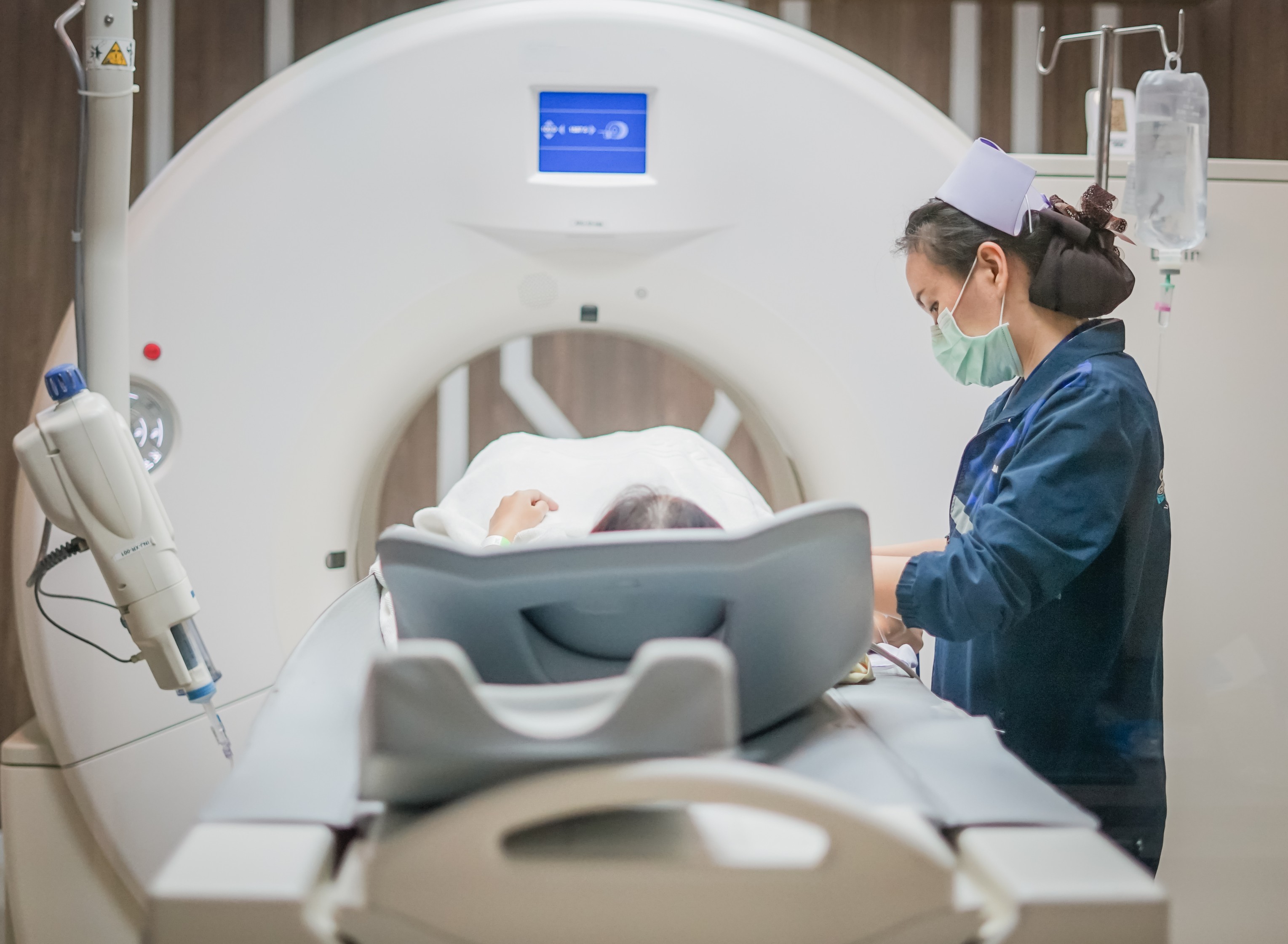What is medical imaging contrast dye?
Contrast dye is a substance that helps radiologists see your organs, vessels, bones, and tissues with high clarity on a medical imaging scan. The dye’s job is to show the radiologist if what they’re looking at is normal or abnormal. If the imaging test order from your doctor says “with and without contrast”, it means you will have a full set of diagnostic images taken first, then a second set after the contrast is administered.
Which medical imaging scans use contrast dye?
MRIs, X-rays, CT scans, PET scans, and ultrasounds can be ordered with contrast. The contrast dye can be taken orally, injected into a vein, or administered rectally. Which kind of contrast agent you get will depend on the scan you’re getting. Read on to learn about the contrast each imaging scan uses.
MRI
Because contrast images are higher quality and much clearer than non-contrast images, an MRI (magnetic resonance imaging) scan with contrast is especially effective at pinpointing tumors of the brain and spine–even super small ones.1 Contrast images are considered the “gold standard” imaging in brain and spine disease diagnostics.
- Contrast agent: gadolinium, a rare earth metal.
- Administered: intravenously.
- Side effects: you might feel a bit of tenderness at your MRI contrast injection site, a temporary cold sensation in your arm, or a very brief wave of nausea or dizziness. All of these experiences should pass quickly if they happen. Gadolinium rarely causes serious side effects–adverse reactions only occur in 0.07% to 2.4% of cases.2
- Allergies: life-threatening allergic reactions are exceedingly rare.3 People with impaired kidney function should always talk to their doctors before receiving a gadolinium-based contrast agent. They are at an elevated risk of a rare side effect called NSF (nephrogenic systemic fibrosis).
- In your system: in patients with normally-functioning kidneys, the gadolinium will be excreted in waste over about 24 hours.
X-ray and CT
A CT (computed tomography) scan is effectively a multi-slice X-ray, so both scans use the same kinds of contrast agents. Both scans are highly effective at producing detailed images of bones, tissues, and blood vessels.
- Contrast agent: iodine or barium.
- Administered: iodine-based contrast dye can be taken orally or intravenously. Barium may be used orally when iodinated contrast agents are medically unsafe (e.g. there is a history of allergic reactions). Barium is also given by enema (rectally).
- Side effects:
- For iodine, warmth at the injection site and a metallic taste in your mouth are common. Mild nausea, itching, and rashes are possible, but uncommon.
- For barium, gastrointestinal upset like constipation, diarrhea, nausea, or vomiting is possible, but should be short-lived. Changes in bowel movements can be expected in the hours and days following barium consumption.
- Allergies: serious side effects and allergic reactions are rare, but when they happen, radiologists are well-prepared to treat them.4 Asthma, hay fever, or other allergies may increase your risk of adverse reaction to iodinated and barium contrast agents.
- In your system: both iodine and barium will be excreted in waste over about 24 hours.
PET
A PET (positron emission tomography) scan uses radiotracers to analyze functioning and disease in the body’s organs and tissues. In conjunction with CT scans, PET scans help diagnose cancer, track spread (metastases), diagnose neurological diseases like Parkinson’s, Alzheimer’s, epilepsy, stroke, and identify heart problems like coronary artery disease.5
- Contrast agent: a radiotracer (most commonly a radioactive sugar called F-18 fluorodeoxyglucose, or “FDG”).
- Administered: radiotracers are given intravenously and take about 30 to 60 minutes to absorb into your bloodstream.
- Side effects: aside from swelling or bruising at the site of the injection, there aren’t many known adverse effects to FDG. However, FDG will make you slightly radioactive after your injection, so it is best to keep a safe distance from pregnant women and animals, and infants, in that timeframe.6
- Allergies: a full-body allergic reaction (anaphylaxis) is possible, but rare.
- In your system: FDG will be excreted in waste over about 24 hours.
Ultrasound
Contrast-enhanced ultrasound (CEUS) is a non-invasive diagnostic imaging technique that doesn’t use any radiation. They’re helpful for scanning abdominal organs and sometimes other parts of the body as well.
- Contrast agent: gas-filled microbubbles. One bubble is smaller than a red blood cell.
- Administered: intravenously.
- Side effects: side effects are rare, given that ultrasound contrast agents are among the safest mediums in all radiological scans.7
- Allergies: in extremely rare cases, hypersensitivity to a contrast ingredient called PEG (polyethylene glycol) can cause anaphylaxis. People with known PEG allergies should talk to their doctors before undergoing any contrast-enhanced ultrasounds.8
- In your system: within minutes, the thin, flexible shell around each gas bubble will burst. The blood will absorb the gas, and the shell will be metabolized.
Booking your scan
Whether you need a scan with or without contrast, scan.com’s easy-to-use scan scheduling tool can help you find what you’re looking for.
Resources:
-
cancer.org: MRI for Cancer
-
acr.org: ACR Manual On Contrast Media
-
nationaljewish.org: MRI Intravenous Contrast Information
-
radiologyinfo.org: Contrast Materials
-
hopkinsmedicine.org: Positron Emission Tomography (PET scan)
-
mskcc.org: About Your PET-CT with FDG Tracer
-
imagingpathways.health.wa.gov.au: Diagnostic Imaging Pathways - Contrast Agents: Ultrasound Contrast Media
-
radiologybusiness.com: FDA warns providers after 2 patients die from ultrasound contrast-agent reactions

